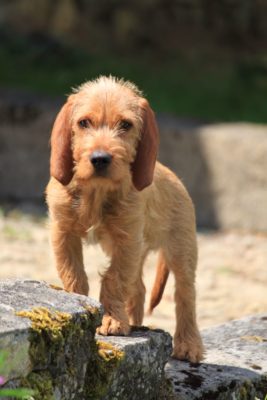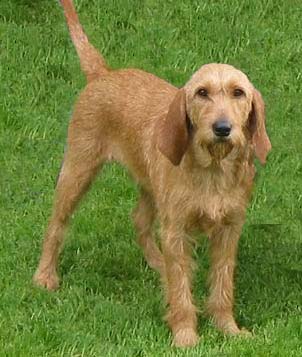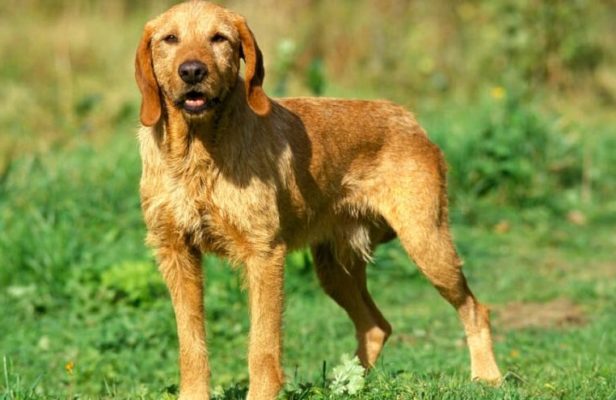Griffon Fauve de Bretagne
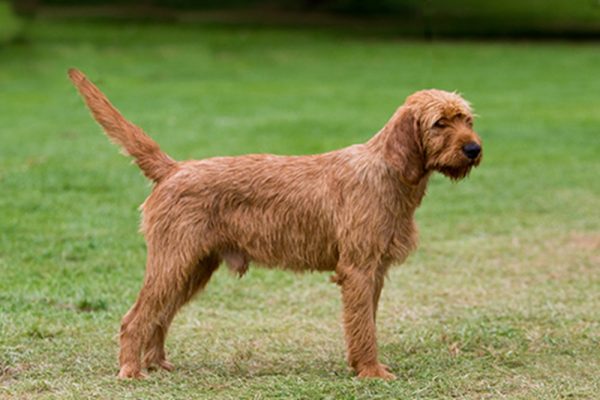
The Griffon Fauve de Bretagne is a free-spirited and independent dog with a reserved and reserved character. The Griffon is both calm and brave. It is a courageous, strong, and resilient dog with an excellent sense of hunter. Usually keeps to himself. Despite this, the pet quickly becomes attached to family members and is very loyal to its owner.
Table of Contents
Breed Information
| Another Name | Fawn Brittany Griffon |
| Origin | France |
| Height | Males 50-56 cm Females 48-52 cm |
| Weight | 18-22 kg |
| Fur | Rough, relatively short |
| Color | Red: Shades from wheat-gold to intense red |
| Lifespan | 10-12 years |
| FCI Classification | Scent hounds and related breeds |
| Group | Hunting dogs, dogs for children |
| Price | $400-1300 |
Breed Photos
Origin History
The Griffon Fauve de Bretagne appeared a long time ago, back in the Middle Ages. The first mention of the breed dates back to 1570. For the first time, it is found in the book of the French ruler Charles IX under the title “The Royal Hunt”.
The modern breed originated from the Great Griffon, which was famous for hunting the wolf. The dog showed itself very well, which led to a decrease in the wolf population. So, by 1885, the Griffon Fauve de Bretagne became a scarce breed due to the lack of hunting. Fans of this dog prevented it from extinction by crossing it with the great Vendée Griffon.
Later, the Griffon was used for hunting hare, fox, and wild boar. The FCI adopted the breed’s standard only in 1951, although it had been developed 30 years before that.
Appearance
The Griffon Fauve de Bretagne is a dog of strong build. The chest is broad, the ribs are rounded, and the abdomen is taut. The back is also wide and short, muscular. The neck is short and powerful. On it sits a large body of the head. The skull is not flat; the occipital tubercle is pronounced. The nasal ridge is black or dark brown.
The ears are pointed, set at eye level, and hanging down to the lobe. The eyes are dark brown. The limbs of the dog are strong, with compact feet. The tail, thick at the base, carries freely.
Character
The Griffon Fauve de Bretagne is a free-spirited and independent dog with a reserved and reserved character. The Griffon is both calm and brave. It is a courageous, strong, and resilient dog with an excellent sense of hunter. Usually keeps to himself. Despite this, the pet quickly becomes attached to family members and is very loyal to its owner. On the contrary, it takes a long time to get used to and is suspicious.
Care
The Griffon Fauve de Bretagne can live both in an apartment and in the country. Of course, the pet will be better in a spacious aviary. In both cases, you need constant physical activity and walks in the fresh air.
The coat is short and undemanding in care. It is enough to comb it regularly with a special brush. After hunting in thickets, carefully inspect your dog and remove thorns and other debris from its fur. The dog’s ears require special attention, as they need to be checked and cleaned constantly.
Training
The Griffon Fauve de Bretagne is an intelligent and persistent dog. Due to these qualities, it is well amenable to training. But because of the heavy, stubborn nature of this breed, dogs need the right approach. Consistent, rigorous training and persistence are necessary. Be prepared for stubbornness, but most importantly, do not be rude to your pet. A comprehensive approach to training and education will make a dog a successful hunter and a loyal companion.
Common Diseases
The Griffon Fauve de Bretagne is a strong dog with good health. She has no hereditary diseases. Common ailments:
- hip dysplasia;
- breast cancer;
- Infectious diseases of the ears.
When using ready-to-eat foods, study the contents carefully. High levels of the female hormone estrogen in dogs can lead to breast cancer. To avoid otitis, you should regularly clean your pet’s floppy ears, which are prone to inflammation. You should not start this process to avoid deafness in your dog.
Nutrition
The Griffon Fauve de Bretagne needs a complete and proper diet. The main part of the diet should be lean meat. Its daily portion for a pet is about 350-400 grams. You should also not forget about vegetables, cereals, and greens. Give your pet cabbage, carrots, beets, and potatoes. Add table salt, herbs, and bone meal to meals. These ingredients will increase the vitamin and mineral value of the food. It is important to reduce the amount of fat in the dog’s diet. Completely unsuitable for the four-legged dog, such human foods as sweets, smoked meats, pickles.
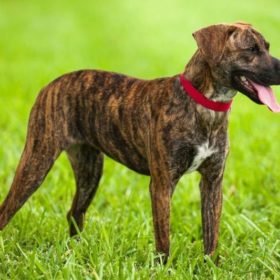 Treeing Tennessee Brindle
Treeing Tennessee Brindle Schwyz Hound
Schwyz Hound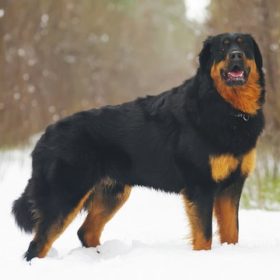 Buryat-Mongolian Wolfhound
Buryat-Mongolian Wolfhound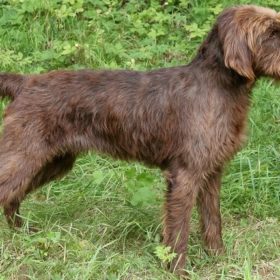 Pudelpointer
Pudelpointer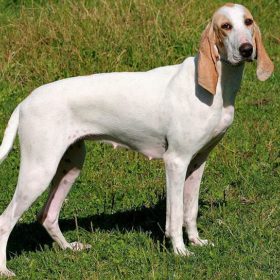 Porcelaine
Porcelaine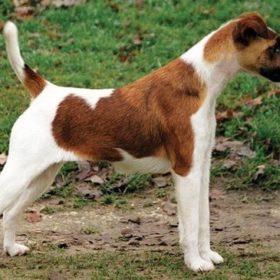 Smooth Fox Terrier
Smooth Fox Terrier